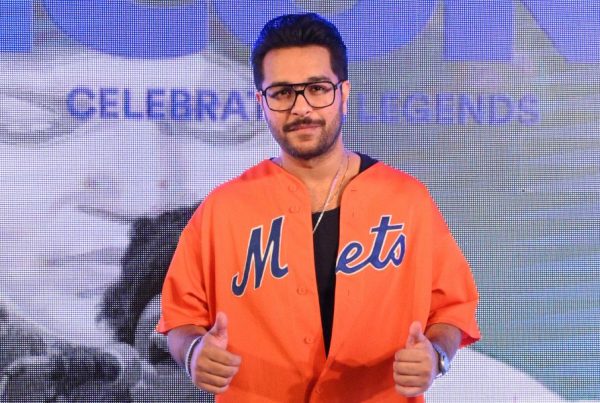We love to complain about ‘outside influences’ in our cinemas, our TV screens and our music but it’s high time to introspect and fix what’s wrong within.
(Published in Dawn Images on Sunday, March 3 2013)
The horror! The horror! The shock to see a well-known Indian face on a Pakistani billboard is absolutely scandalous. Reality check: these celebrity faces wouldn’t be so well-known if we, as a nation, weren’t so deliriously besotted with Bollywood! Indian films are released in our cinemas, Indian and Turkish TV serials are put up on our cable channels and Indian songs blare at our weddings where we dance the nights away with Radha, Munni, Sheila and Chikni Chameli. Then why the hue and cry over a little advertising? Why the hypocrisy? The irony is that the minority that doesn’t watch Indian films is the minority that’s unperturbed by the billboards. For the rest of the population, it’s as bad as an Indian invasion.
Indian content in our cinemas…
For the past several years, Indian movies have enjoyed great space and success in Pakistan. And let’s be honest, we’ve enjoyed them just as much. But our artistes and moral police have opposed the screening of Indian films. Local artists say that Indians (no one has a problem with American?) are hogging screen space that should be restricted and reserved for all things Pakistani. Defenders of our culture say that they corrupt the youth. It’s puzzling how they feel a handful of Indian films playing in cinemas (at premium price) could overshadow the influence of our vibrant Pushto, Punjabi and regional films, the content running (for free) on our cable networks and the easily available, uncensored pirated DVDs (50 rupees, compared to a 350+ cineplex ticket).
The harsh reality is that cinema screens were shutting down until Indian films were legalized. How can Indian films replace Pakistani content that never existed? What they are doing is filling a void. The public started marching to the cinemas once Bollywood films started coming in, these films financed the construction of news screens, which in turn attracted a whole new film going generation seeking Hollywood productions.
“You were destroying your cinemas for the last 40 years and now you are rebuilding them,†says Nadim Mandviwalla. “Your 800 cinemas came down to 140. Now every year you are making more screens. Foreign films have been a lifesaver. Hollywood and Bollywood have contributed hugely.â€
“We have an old school and a new school and we need the old school to take a leap,†he furthered in a recent conversation. “We took a leap and turned a Nishat into an Atrium. Shoaib Mansoor took a leap and made Khuda Kay Liye and Bol, which wouldn’t have happened ten years ago. Other producers and filmmakers need to take that leap too. If we are not willing to progress then someone else with come and take our place. We need to stop complaining and do something about it.â€
Another argument is that Pakistani films aren’t allowed to screen in India.
“Bol and KKL were released in India,†Mandviwalla clarifies. “Whether they did well or not is irrelevant. The first Indian film didn’t do well in USA. Ten years down the lane a Pakistani film will do well in India but we have to work for it.â€
Indian content on our TV screens…
Indian television programs may not have a legal stamp of approval from the State but they make it into our lives via DVD stores and cable operators. Our families (especially the women) watch Indian reality shows and soaps (those endless drama serials) with unflinching dedication. But whether our screen time is taken up by Indian dance shows, the saas-bahu sagas or the latest threat – Turkish dramas – this infiltration of foreign programs has been vehemently opposed by our artistes, who feel that all screen space should be restricted to all things Pakistani.
Channels argue that the few production houses in Pakistan are creating sub-standard content, they refuse to raise standards but what they do raise is the cost of their dramas. Compared to them, foreign programs cost less and bring them higher ratings. The artistes feel threatened.
“I don’t feel they (foreign plays) threaten us at all,†says Sanam Saeed, a young TV artiste who’s future is invested in television. “I think it has forcefully paved a way for healthy competition. I don’t really think there is anything wrong with it. I just wish channels wouldn’t cut corners and air so much content just because it is much cheaper and I certainly wish they would promote the local plays on their channels instead of the Turkish ones. Take for example Talkhiyan; it is struggling to be recognized behind the outright, shameless promotion of Turkish soaps. By all means air them by don’t put them before us.â€
What about the fact that they come at a cheaper price and get higher ratings?
“I don’t know. I feel that’s none of our business. Everyone loves change. If the audience gets to see different looking people and locations and different plotlines then why wouldn’t they enjoy it? By the same token, why wouldn’t channels want to cut costs? It’s all fair play, really.â€
Pakistani television programs may not be aired in India but our serials are hugely popular amongst Urdu-speaking audiences all over the world, especially India. Moreover, one can justify the lack of Pakistani television in India by the overwhelming presence of our musicians. Our artists enjoy a steady and lucrative platform across the border.
“Nusrat Fateh Ali, Ghulam Ali, Abida Parveen, Ali Zafar, Ali Haider and Adnan Sami Khan…all these artistes enjoy popularity in India. And in my experience India has never stopped the exchange of ‘art’ and ‘artistes’,†Bushra Ansari recently said at the Karachi Literary Festival. One would add Junoon and Atif Aslam to that list and agree.
Moreover, despite having a large pool of talent, the burgeoning Indian film industry has no qualms in accepting a genuinely talented Pakistani artist like Ali Zafar. Our legendary musicians Mehdi Hassan and Nur Jehan were honoured at the Filmfare Awards centenary.
Whether we talk about film, music or television, any kind of cultural exchange can only be good and it’s insane to impose restrictions. The only way to challenge a foreign product is to make your own product stronger. I don’t think any Pakistani would ever accept a substitute for Nazia Hassan, Nusrat Fateh Ali Khan, Abida Parveen, Arif Lohar, Vital Signs, Junoon and all those fantastic albeit sparse mega brands that have evolved within this tiny country. It’s time more, equally concrete brands evolved. The only way to combat a foreign culture is to make yours strong and that strength doesn’t come by insulation. It comes by liberation.
Indian celebrities on the billboards…
From soap to sodas, fashion to food and water to watches, Indian stars have made their way to our billboards and it seems are here to stay. To see Indian stars on our billboards is perhaps the biggest bone of contention for local artistes but truth be told, it’s the public demand that urges corporations to bring them in. Simply put, Bollywood stars outweigh local artistes in popularity. The other angle is economic. Believe it or not, industry insiders bemoan the fact that a reputed Pakistani playback singer will charge three times as much as a Shreya Ghosal, for example, to record a single jingle.
Also, most multinational campaigns featuring Indian celebrities are not financed here, which saves them the hassle (and budget) of shooting a campaign with a local celebrity.
The rage as summer swings in, of course, is the lawn hysteria and the celebrity endorsements that come with it. Deepika Padukone and Kareena Kapoor have modeled for Firdous, Sushmita Sen and Karisma Kapoor for Crescent and this year we see Nargis Fakhri for Elan and Priyanka Chopra for Ittehad (Fahad Hussayn).
“We worked with Aamina Sheikh last year but have shot this year’s campaign with Nargis Fakhri,†says Khadijah Shah of Elan, one designer who’s using an Indian celebrity in her campaign.
“We would have loved working with Aamina again but she was part of Kamal Lawn and since we’re collaborating with another mill this year, we couldn’t use the same face. Kamal will be working with Aamina. Honestly speaking, I’m not a Bollywood fan but there are very few people who can represent our brand in Pakistan. The options are very limited. We almost hired Mahira, who would have been perfect, but that didn’t work out. Then we made a conscious decision to use Nargis Fakhri because she is recognized here and in India, where we will be exporting. Simply put, she has wider appeal.â€
It’s a no brainer: Indian stars in lawn campaigns guarantee maximum impact. The best way to attract the average housewife is to pitch her favourite celebrity to her. How many women would buy lawn that featured Veena Malik, Reema or Meera?









